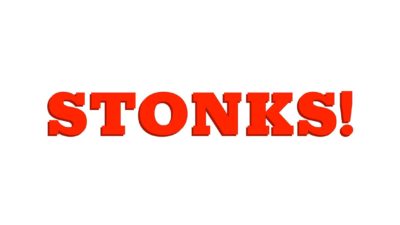Your net worth is just a number, but it can have a powerful impact on your life. The higher your net worth, the greater the resources at your disposal. These resources can be put to work to support your lifestyle and consolidate your standard of living. So how can you hack your net worth?
What is net worth?
Your net worth is simply your assets minus your liabilities. Your assets are things you own that have value. Obvious examples are things like a share portfolio, house, and car. Less obvious examples are things like household items, jewellery, and clothes, that could be sold for valuable consideration.
Your liabilities are things that you owe. Obvious examples are your mortgage, personal loans, and credit card debt. Less obvious examples include student loans, upcoming bills, and periodic subscriptions.
In order to maximise your net worth, you need to maximise your assets and minimise your liabilities. Sounds simple right? Well, sort of. The tricky part is that your assets and liabilities grow at different rates.
Assets versus liabilities
A house is an asset. According to CoreLogic, Australian house prices have risen by an average of 6.8% per annum over the past 25 years. A mortgage is a liability. Interest rates on mortgages have varied significantly over the last 25 years, but are currently around 4%. Hence, based on historical trends and current interest rates, it makes sense to take out a mortgage (a liability) in order to pay for a house (an asset).
In this scenario, the asset (the house) is growing, while the liability (the mortgage) is both growing (with interest) and shrinking as you pay it off. But the asset is growing faster than the liability, on average.
A car is an asset. But with a few exceptions, the price of a car doesn't increase over time. Instead, it decreases as the car depreciates. A car loan is a liability. Car loans are currently available with interest rates from 5.5%. A 5 year car loan for $30,000 could cost $34,380 to repay, at the end of which the car is worth less than half the purchase price.
In this scenario the asset (the car) is shrinking, while the liability (the loan) is growing with interest and shrinking as you repay it. At the end you have spent more than $34,000 for an asset worth (at most) $15,000.
Invest in your assets
Your assets are more varied than you realise. Everything from your household possessions to your intellect are assets, and can be utilised to hack your net worth. By making smart decisions, you can invest in assets that grow, evening out the net-worth equation.
Your earnings and superannuation are the primary assets at your disposal. It is your job to grow them so that the net-worth equation is positive. Put aside a set amount of earnings for asset building and stick to it. Take the time to ensure your superannuation is invested in the right fund for you.
Many people chose to invest in ASX shares as a method of wealth creation. Returns on ASX shares averaged 7.7% between 2014 and 2019. A share portfolio adds to assets and, over time, should grow both in terms of capital and via dividends.
Minimise the liabilities
Liabilities are an equally important factor in the net worth equation. The key is to minimise these, prioritising those that charge high interest. Credit cards, personal loans, and car loans all tend to charge higher rates of interest so should be a priority.
If possible look to consolidate higher rate debts into lower rate debts, such as by rolling your credit card balance into your mortgage. Then focus on paying off the additional balance as quickly as possible. And try to avoid running up another credit card balance.
If your liabilities are the issue, you may have to cut down spending for a while. It may not be easy but it is worth it. Once you get the liability side of your net-worth equation under control, it is much easier to boost the asset side.
Making an investment
The first step to investing is to determine what your goals are. Why are you looking to invest? What is your time frame? A time frame of at least 5–7 years is recommended for investing in shares to allow investors to ride out volatility in the markets.
The next step is to open a suitable online brokerage. Consider how often you will be trading and check the fees charged by different brokers. Look at the research and notifications offered by different services as these can be really valuable.
You will need to begin checking out investment options at this point. Keep your goals in mind as well as your risk tolerances. Some investors may be seeking income, while others may be looking for capital growth. The level of funds available for investment will also influence investment options.
Investment options
Many investors use exchange traded funds (ETFs) when investing on the ASX due to the diversification benefits they offer. The Betashares Australia 200 ETF (ASX: A200) provides exposure to the largest 200 companies listed on the ASX and returned 19.23% in the year to 31 October.
Top holdings include Commonwealth Bank of Australia (ASX: CBA) (7.9%), CSL Limited (ASX: CSL) (6.6%), BHP Group Ltd (ASX: BHP) (6.0%), Westpac Banking Corp (ASX: WBC) (5.6%), National Australia Bank Ltd (ASX: NAB) (4.7%), Australia and New Zealand Banking Group (ASX: ANZ) (4.3%), Woolworths Group Ltd (ASX: WOW) (2.7%), Wesfarmers Ltd (ASX: WES) (2.5%), Macquarie Group Ltd (ASX: MQG) (2.4%), and Telstra Corporation Ltd (ASX: TLS)(2.3%). Distributions are paid quarterly and management fees are 0.07% per annum.
The iShares Core S&P/ASX 200 ETF (ASX: IOZ) tracks the S&P/ASX200 Accumulation Index befores fees and expenses and returned 19.10% in the year to 31 October. Top holdings are similar to those of the Betashares Australia 200 ETF. Distributions are paid quarterly and management fees are 0.09% per annum.
Foolish takeaway
Your net worth is just an equation: assets minus liabilities. By understanding this equation and working within its bounds, you can hack your net worth and make sure it's positive.








